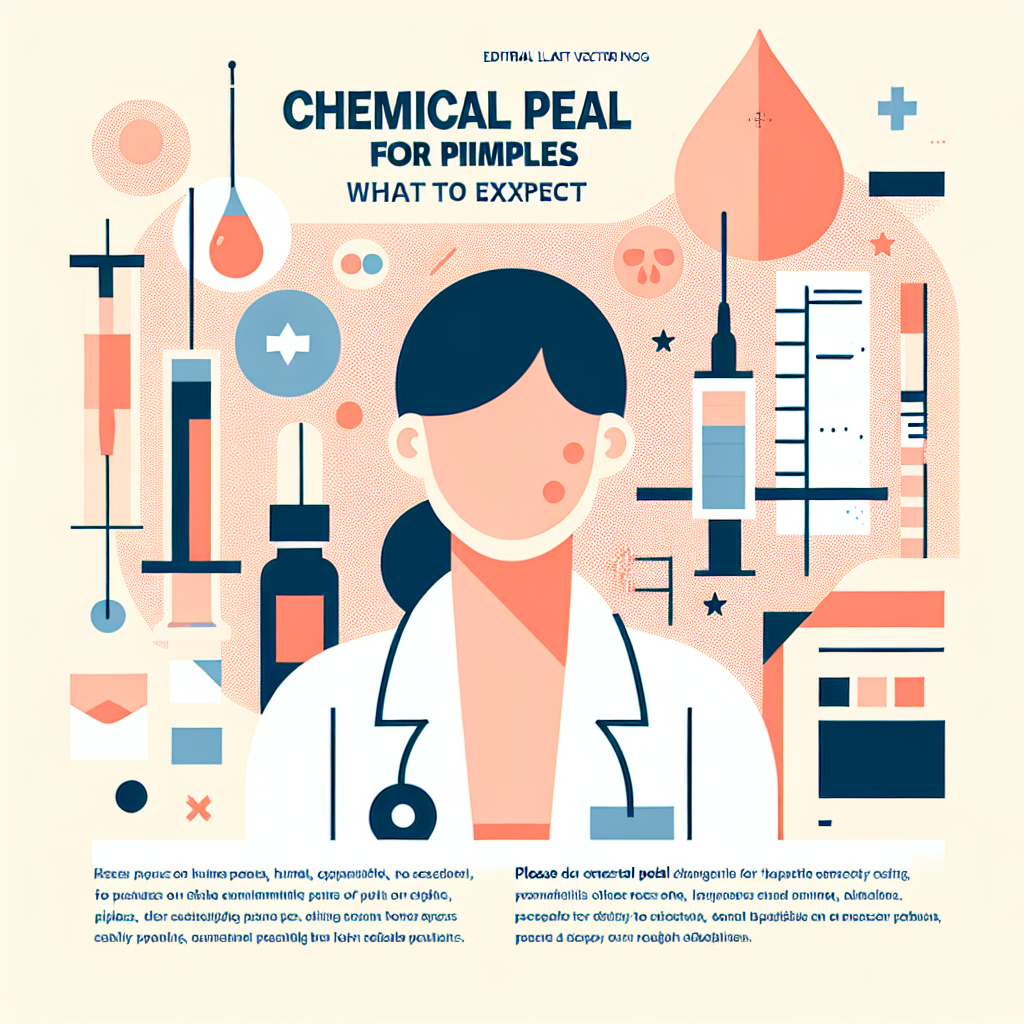Thinking about a chemical peel for pimples? Many people considering an acne-focused treatment want to know what to expect from the procedure, recovery timeline, and realistic results. This guide walks through types of peels, how they work on active acne and post-acne marks, common side effects, and aftercare so you can make an informed decision with your provider.
Chemical peels for pimples: how they work and who’s a good candidate
Chemical peels are topical solutions that exfoliate layers of skin to speed cell turnover and reduce clogged pores. An acne peel can be superficial, medium, or deep depending on the formula and strength. Superficial peels (like low-concentration alpha hydroxy acids) are common for treating milder breakouts and improving skin texture. Medium peels (trichloroacetic acid or higher-strength acids) address deeper comedones and some discoloration. Deep peels are rarely used specifically for acne due to downtime and potential complications.
Types of peels and what they treat
- Superficial peels: glycolic acid, salicylic acid — help with oil control, blackheads, and mild acne.
- Medium peels: trichloroacetic acid (TCA) — better for persistent acne and some scarring.
- Combination peels: formulas that pair exfoliating acids with anti-inflammatory agents to reduce irritation.
When discussing treatment, mention whether you’re interested in chemical face peels for acne specifically; formulations and expectations differ from cosmetic brightening peels. A licensed dermatologist or aesthetician will assess your skin type, current medications, and acne severity before recommending an approach.
What to expect during treatment and recovery
During an in-office acne peel, your provider will cleanse the skin, apply the solution for a set time, then neutralize or remove it. Mild stinging or warmth is common. Afterward, your skin may be red, flaky, and sensitive for several days to a week for superficial peels, while medium peels can produce crusting and longer downtime. Follow all aftercare instructions: gentle cleanser, broad-spectrum sunscreen, and avoiding picking at peeling skin to reduce risk of infection or hyperpigmentation.
Does chemical peel help with acne scars and long-term results?
Many patients ask, does chemical peel help with acne scars? Superficial peels can improve texture and reduce post-inflammatory hyperpigmentation, while medium-depth treatments may help shallow boxcar scars and shallow atrophic irregularities. For deeper depressions, peels are often combined with microneedling, fillers, or laser resurfacing. If you’re targeting face peels for scars, a series of treatments spaced weeks apart is typical to achieve noticeable improvement.
Peels for acne scarring can reduce redness and surface irregularities, but expectations should be realistic: complete scar elimination is uncommon. Your provider can show before-and-after photos and discuss complementary options if necessary.
Risks, side effects, and safety considerations
Common side effects include temporary redness, flaking, and increased sensitivity to sun. More serious but uncommon risks include infection, prolonged redness, or pigment changes, particularly in darker skin tones. Tell your clinician about recent isotretinoin use, pregnancy, or active eczema, as some conditions change suitability for peels. Always choose a qualified practitioner and patch-test if recommended.
For reliable background on chemical peels, techniques, and safety considerations, see this overview: https://en.wikipedia.org/wiki/Chemical_peel.
Aftercare tips for best outcomes
- Use a gentle, fragrance-free cleanser and a non-comedogenic moisturizer.
- Apply broad-spectrum SPF 30+ daily—sun exposure increases risk of pigmentation after a peel.
- Avoid retinoids or exfoliating products until your provider clears them.
- If scabbing or peeling occurs, resist the urge to pick; let skin heal naturally.
If you’re interested in pairing treatments with sustainable skincare practices or gentle maintenance products, consider reading more about eco-conscious routines and ingredient choices at descriptive anchor text.
- Peels are not a one-time cure for persistent acne; they’re a tool within a broader acne management plan.
- Superficial peels are safer with minimal downtime; medium peels offer stronger results but require more recovery.
- Realistic expectations and an individualized plan (often combining treatments) yield the best improvement for peels for acne scarring.
- Sun protection and gentle aftercare significantly improve outcomes and reduce complications.
FAQ: Will a chemical peel stop pimples?
Chemical peels can reduce the frequency of breakouts by exfoliating pores and decreasing oil buildup, but they are rarely a standalone cure. For ongoing acne, peels are often combined with topical or oral medications tailored by a dermatologist.
FAQ: How many sessions are needed to see scar improvement?
Improvement in post-acne marks or mild scarring typically requires multiple treatments spaced several weeks apart. Your clinician will recommend a series based on scar depth; expect gradual changes rather than immediate dramatic results.






